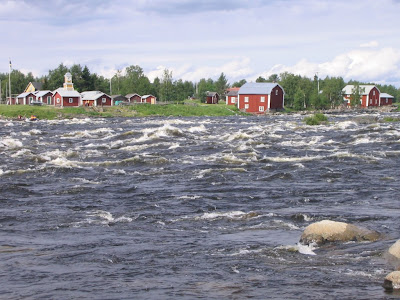Rivers
The Dnieper River begins in the Russian oblast of Smolenskaya and flows west into Belarus, where it turns south and follows near the border until it reaches Ukraine. From here, it flows mainly south through a series of large river-lakes and the city of Kiev, and Dnipropetrovs'k before reaching the Black Sea near Odessa.The Po river begins in the mountains of northern Italy and flows east, past Milan until it reaches the Adriatic Sea.
The Tagus River begins in the Sistema Ibérico of eastern Spain. From there, it flows west until it reaches the Spanish Portuguese border where it meets the Atlantic Ocean at the city of Lisbon.
The Danube begins in south-western Germany, flows into Austria, through Vienna, then marks the Slovakia / Hungary border before it moves south into Hungary proper. From there it flows straight south, through Budapest and on until it hits the Hungary / Croatia / Serbia border and follows the Serbia / Croatia border for a short while until it moves east and across Serbia, through Belgrade, and continues until it reaches the Romania / Serbia border. It follows the Romanian Serbian border until Serbia turns into Bulgaria and continues east along that border until it is almost to the sea, when it turns north along the coast, through Romania until it reaches the southern tip of Moldova where it makes another sharp turn and flows east along the Romanian Ukrainian border into the Black Sea.
The River Torne begins in northern Sweden near the Swedish Norwegian border at Lake Torn (Tornetrask). From here it flows southeast until it meets the Finnish Swedish border and follows that south until it reaches the Gulf of Bothnia and the Baltic Sea.
The Elbe River begins in the Sudeten Mountains of the Czech Republic near the border of Poland. From there it flows west and then north into Germany and from there north and the west. through Hamburg and into the North Sea.
Mountains
The Pyrenees mountain range lies along the border between Spain and France. They also mark the narrow point between the Iberian Peninsula and the rest of Europe.The Grampian Mountains mark the beginning of the Scottish Highlands and run east and west from Aberdeen on the east to the Atlantic coast on the west.
The Peloponnesus Mountains run across the Grecian peninsula (almost island) of Peloponnese.
Site and Situation
Europe is a complex continent with many rivers, mountains, seas, plains, plateaus, peninsulas and islands all thrown together in one of the smallest continents. Eastern Europe consists of fertile plains and farmlands to the south and slowly changing to broad forests to the north. Northwestern Europe interrupts this comfortable regularity with the Baltic Sea and the icy, mountainous regions of Scandinavia (and the Atlantic ocean beyond that). South of Scandinavia, across a very narrow channel lies Denmark and the lowlands of central Europe. This area is used for crops, oats, potatoes, rye and beets and is one of the most populated regions of Europe. South of this area various mountain ranges rise up and separate northern and southern Europe. Southern Europe borders the Mediterranean Sea and is much warmer and milder than the rest of Europe. The land is formed into a number of southern-reaching, mountainous peninsulas (Spain, Italy, Greece) with arms of the Mediterranean in between. Europe also claim a few islands, many smaller islands in the northern Mediterranean and three large ones off of the northern Atlantic coast. These follow the same geographical patterns as the lands to the east. Mountainous in the northern islands and flatter to the south.Europe is situated in the north eastern hemisphere (although a bit of it sticks out into the north western). It is bordered by the Atlantic ocean on the west, the Ural mountains, the Ural river and the Caspian Sea to the east, The Caucasus Mountains, the Black Sea and the Mediterranean Sea to the South, and the Barents Sea to the North.Europe is unique because of its proximity to many of the other continents of the world: North America to the west, Asia to the east, and Africa to the south.
Bonus
People residing in Europe speak a variety of languages. List one of the languages spoken in Europe and the countries where it is found.The Sami language is spoken by the herdsmen of Scandinavia who live in northern Sweden, Norway, Finland and the northern area of Russia that lies near Finland (the western side of the White Sea).









No comments:
Post a Comment